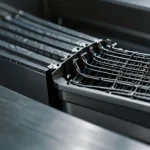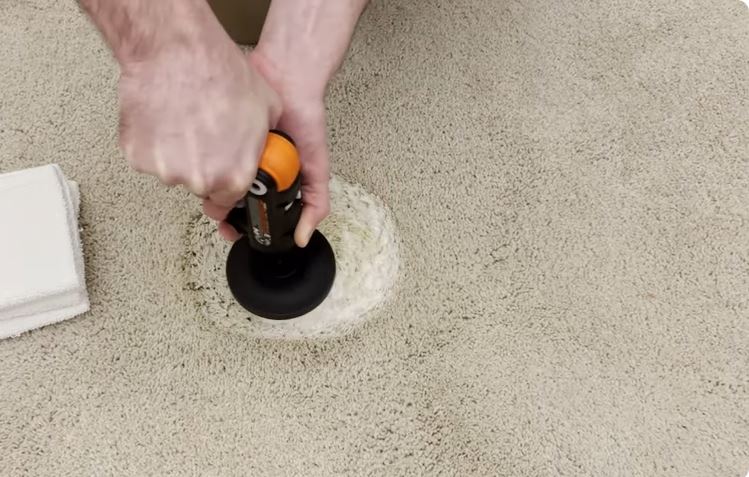Hey there! I’m Jon, and I’ve been cleaning jewelry for years. Let me tell you, ultrasonic cleaners are amazing for making your jewelry sparkle like new.
But here’s the thing – choosing the right liquid for your cleaner is super important. It’s not just about getting your jewelry clean; it’s about keeping it safe too.
In this guide, I’m going to share everything I’ve learned about picking the best liquid for your ultrasonic jewelry cleaner. By the time you finish reading, you’ll be an expert too!
Understanding Ultrasonic Cleaners
Before we dive into the liquids, let’s talk about how these cool machines work. Ultrasonic cleaners use sound waves – waves you can’t hear – to clean your jewelry. These waves create tiny bubbles in the cleaning liquid. When the bubbles pop, they knock off dirt and grime from your jewelry. It’s like having thousands of tiny scrubbers working on your rings, necklaces, and earrings all at once.
Using an ultrasonic cleaner has lots of good points. First, it can clean spots you can’t reach with a brush. Think about all the tiny nooks in a chain or the back of an earring. An ultrasonic cleaner gets in there and cleans it all. Plus, it’s gentle on most jewelry, so you don’t have to worry about scratches.
But here’s the catch – the liquid you use in the cleaner is super important. It’s not just about getting things clean. The wrong liquid can hurt your jewelry. That’s why we need to talk about choosing the right one.
Why the Right Liquid Matters
Picking the right liquid for your ultrasonic cleaner is really important. Different types of jewelry need different care. What’s good for your gold ring might not be good for your pearl necklace. Using the wrong liquid can cause big problems. It might make stones fall out, cause tarnishing, or even eat away at some materials.
Let me give you an example. I once used a strong cleaning liquid on a silver bracelet with turquoise stones. The liquid was great for the silver, but it damaged the turquoise. The stones lost their color and became dull. That’s when I learned how important it is to choose the right liquid for each piece of jewelry.
Types of Cleaning Liquids
Now, let’s talk about the different types of liquids you can use in your ultrasonic cleaner. There are three main types: water-based solutions, commercial cleaning solutions, and homemade solutions. Each has its own good points and things to watch out for.
Water-Based Solutions
Water is the most basic cleaning liquid for ultrasonic cleaners. But not just any water – distilled water is the best choice. Why? Because it doesn’t have the minerals and other stuff that tap water has. These extras can leave spots on your jewelry or even damage it over time.
You can make the cleaning even better by adding a tiny bit of mild detergent to the distilled water. This helps remove oils and dirt that water alone might miss. Just remember, a little goes a long way – you don’t need much detergent at all.
Here’s a simple recipe I often use:
- 1 cup of distilled water
- 2-3 drops of mild, unscented dish soap
Mix these together gently to avoid creating too many bubbles. This solution works well for many types of jewelry, especially gold and silver pieces without delicate stones.
Commercial Ultrasonic Cleaning Solutions
There are special solutions made just for ultrasonic jewelry cleaning. These are great because they’re designed to be safe for most types of jewelry. They often have ingredients that help prevent tarnishing and keep your jewelry looking shiny for longer.
Some popular brands include:
- Magnasonic Jewelry Cleaner Solution
- Connoisseurs Jewelry Cleaner
- Simple Green Pro HD Heavy-Duty Cleaner
These solutions are easy to use – you just add them to your ultrasonic cleaner according to the instructions on the bottle. They’re a good choice if you clean a lot of different types of jewelry and want something reliable and safe.
Homemade Cleaning Solutions
If you like to make things yourself, you can create your own cleaning solution for your ultrasonic cleaner. Here’s a simple recipe I’ve used with good results:
- 1 cup warm distilled water
- 1/4 cup white vinegar
- 2 drops of mild dish soap
This mixture is good for cleaning gold and diamond jewelry. The vinegar helps remove buildup, while the soap helps lift away oils and dirt.
But be careful! Some ingredients can harm your jewelry. Avoid using harsh chemicals like bleach or ammonia. These can damage delicate gems and metals. Also, stay away from abrasive ingredients like baking soda – they might scratch your jewelry.
Best Practices for Using Cleaning Liquids
To get the best results from your ultrasonic cleaner, follow these tips:
- Use the right amount of liquid. Your ultrasonic cleaner should have marks showing how much to add. Don’t overfill or underfill.
- Make sure the temperature is right. Warm water usually works best, but not too hot! Very hot water can damage some types of jewelry.
- Don’t clean for too long. Most jewelry only needs a few minutes in the cleaner. Cleaning for too long can sometimes cause damage.
- After cleaning, rinse your jewelry with clean water and dry it gently with a soft cloth. This removes any leftover cleaning solution.
- Clean your ultrasonic cleaner regularly. Over time, dirt and oils can build up in the machine, making it less effective.
Liquids to Avoid
Some liquids should never go in your ultrasonic cleaner. Here’s a list of things to avoid:
- Bleach
- Ammonia
- Acetone (nail polish remover)
- Chlorine
- Strong acids or bases
These chemicals can really hurt your jewelry. They might make it look clean at first, but they can cause damage over time. They can eat away at metals, dull gemstones, or even dissolve some materials completely.
Also, be careful with household cleaners. Even if they’re good for cleaning your house, they might not be safe for your jewelry. Stick to liquids made for jewelry cleaning to be safe.
Choosing the Right Liquid for Different Types of Jewelry
Different types of jewelry need different care. Let’s look at some common types and what works best for each.
Gold Jewelry
For gold jewelry, a mild soap and water solution usually works great. You can also use commercial solutions made for precious metals. These are gentle but effective at removing dirt and oils.
Here’s a simple cleaning solution for gold:
- 1 cup warm distilled water
- 2-3 drops of mild dish soap
This works well for most gold jewelry, including rings, necklaces, and bracelets.
Silver Jewelry
Silver needs special care to prevent tarnishing. Look for solutions that have ingredients to protect against tarnish. Some commercial cleaners are made just for silver and work really well in ultrasonic cleaners.
If you’re making your own solution, try this:
- 1 cup warm distilled water
- 1/4 cup white vinegar
- 2 drops of mild dish soap
The vinegar helps remove tarnish, while the soap cleans away dirt and oils.
Gemstone Jewelry
Different gems need different care. Diamonds are tough and can handle most cleaning solutions. But softer stones like opals or pearls need very gentle cleaning. For these, it’s best to use solutions made specifically for delicate gems.
Here’s a table showing which gemstones are safe for ultrasonic cleaning and which aren’t:
| Safe for Ultrasonic Cleaning | Not Safe for Ultrasonic Cleaning |
|---|---|
| Diamond | Pearl |
| Ruby | Opal |
| Sapphire | Emerald |
| Amethyst | Tanzanite |
| Garnet | Turquoise |
For safe gemstones, you can use a mild soap and water solution. For delicate gems, it’s best to clean them by hand or consult a professional jeweler.
Costume Jewelry
Costume jewelry can be tricky. It’s often made of materials that don’t do well with harsh cleaning. For these pieces, use very mild solutions and don’t clean them for too long. A quick dip in soapy water might be all they need.
Here’s a gentle solution for costume jewelry:
- 1 cup cool distilled water
- 1 drop of mild dish soap
Only clean costume jewelry for 30 seconds to 1 minute in the ultrasonic cleaner to avoid damage.
How to Choose the Right Liquid
When picking a cleaning liquid, think about:
- What your jewelry is made of
- How delicate it is
- What kind of dirt or tarnish you’re trying to remove
If you’re not sure, it’s always best to start with the gentlest option. You can always try something stronger if needed, but it’s hard to undo damage from a cleaner that’s too harsh.
Before using any new cleaning liquid, test it on a small, hidden part of your jewelry. This way, you can make sure it’s safe before cleaning the whole piece.
Conclusion
Choosing the right liquid for your ultrasonic jewelry cleaner doesn’t have to be hard. Remember these key points:
- Distilled water is a safe starting point for most jewelry.
- Commercial solutions can be great for specific types of jewelry.
- Avoid harsh chemicals that can damage your precious items.
- When in doubt, go for the gentlest option.
- Always test a new cleaning solution on a small area first.
By following these guidelines, you’ll keep your jewelry sparkling clean and safe from damage. Happy cleaning!
FAQs
Can I use dish soap in an ultrasonic cleaner for jewelry?
Yes, mild dish soap is an excellent option for most jewelry types.
Is it safe to clean all jewelry types with an ultrasonic cleaner?
Not all. Avoid cleaning delicate stones like pearls and opals in ultrasonic cleaners.
How often should I clean my ultrasonic solution?
Replace the solution after every use for optimal results.
Yes, ultrasonic cleaners can effectively remove
Can ultrasonic cleaners remove tarnish from silver jewelry?
















